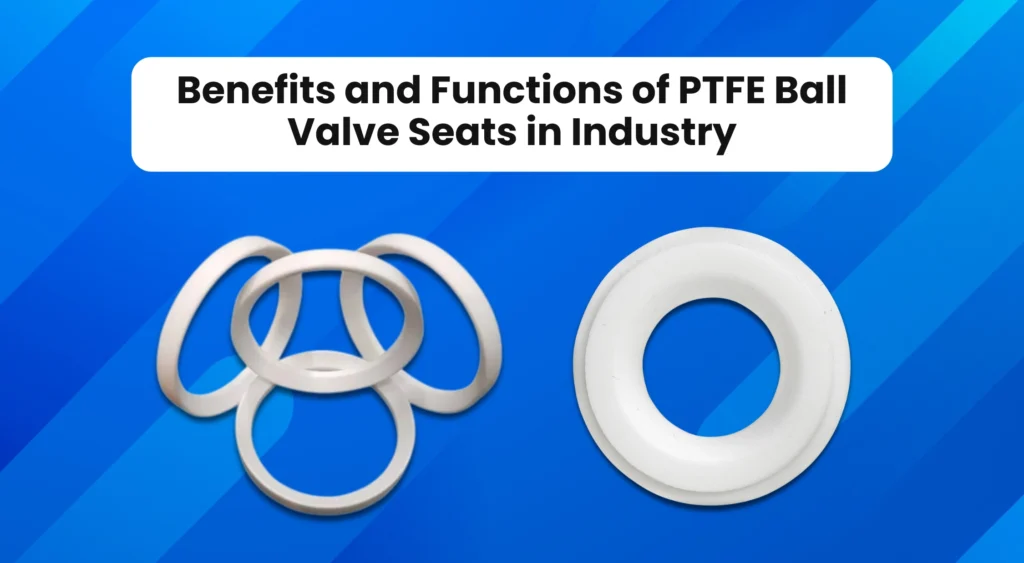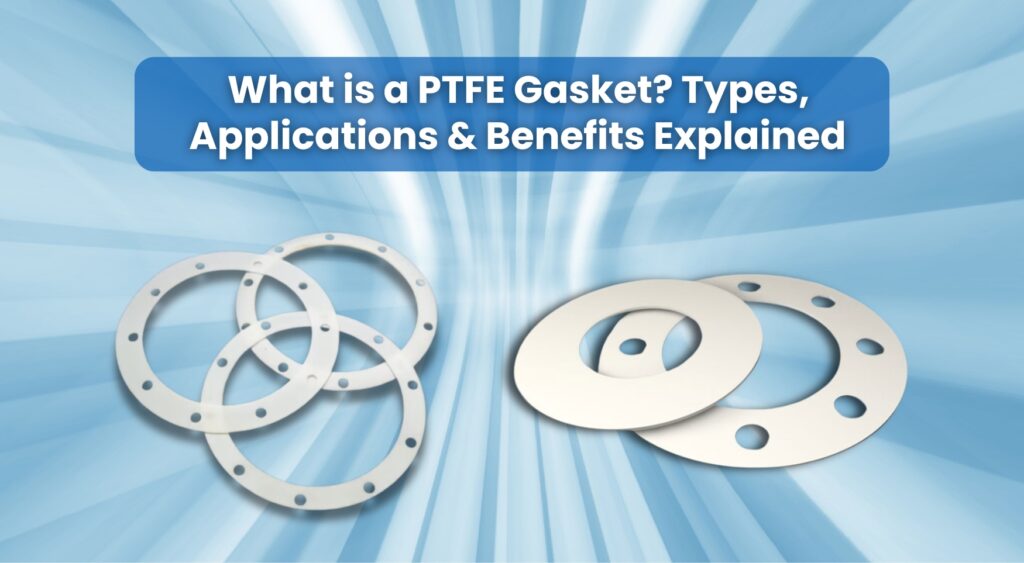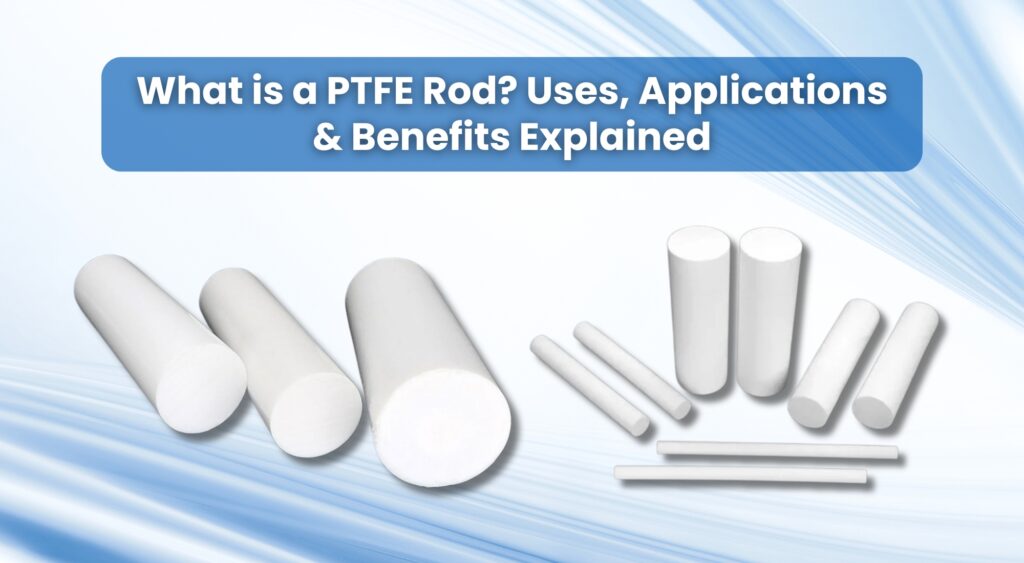In the industrial sector, ball valves have become the most common option for controlling the flow of liquids and gases. Among the features that make them efficient, the PTFE ball valve seat is the most important one. The term PTFE refers to Polytetrafluoroethylene. It is a plastic of very high performance. It is characterized by low friction and high resistance to aggressive chemicals.
Moreover, it can tolerate very high and very low temperatures. These seats function as leak-proof isolators between the ball and the valve body. Consequently, the valve can operate smoothly and without any leakage.
The topic of this blog post is how PTFE Ball Valve Seats ensure smooth operation and durability. They are not only strong but also very reliable valves. They can reduce friction and thus prolong the life of valves under various conditions.
What Are PTFE Ball Valve Seats?
PTFE stands for Polytetrafluoroethylene. It’s a strong plastic that resists chemicals well and has very low friction. The PTFE ball valve seats are the round parts lying between the ball and the valve body. Their purpose is to form a barrier that prevents leaking when the valve is in the closed position. Many industries use these seats. They include:
Applications Across Industries
- Water treatment
- Chemical processing
- Oil and gas
- Food and beverage
- Pharmaceuticals
The main reason for their acceptance is PTFE’s ability to handle tough conditions. It remains intact and does not wear down easily.
Key Benefits and Industrial Uses of PTFE Ball Valve Seats
The PTFE ball valve seats are crucial for the ball valves’ performance. They reduce resistance, ensure a tight seal, and allow for smooth ball rotation. This makes fluid flow control simple. Here is a breakdown of their positive impact on operational smoothness:
1. Reduced Friction for Easy Operation
PTFE’s low friction allows the valve ball to turn with ease. The system requires fewer resources to operate the valve because of this feature. The valve works well because it stops thick fluids and high pressure from causing issues.
The valve lasts longer. Reduced friction means less wear between the ball and seat parts. The design of the turning mechanism follows a basic construction approach. The valve can perform thousands of cycles without any friction because of its design. It won’t get stuck or jammed over time.
2. Precise Sealing for Leak Prevention
The PTFE seats do a little molding to the ball’s surface, so there is a uniform seal made. This precise sealing is a key reason why the valve prevents any fluid leaks when closed. It operates with safety and efficiency as its core operating principles.
A good seal helps keep system pressure steady and reduces energy loss. PTFE seats maintain their shape and sealing properties under different pressure conditions. This makes operations reliable.
3. Minimization of Wear and Tear
PTFE is soft and non-abrasive. These properties reduce friction between the seat and ball components. Reducing wear means fewer repairs. The system design extends operational life while reducing maintenance expenses. PTFE’s non-stick property prevents materials from building up.
This helps maintain the smooth operation of activities. The regular maintenance schedule protects the valve from performance degradation for extended periods. It won’t need regular part replacements due to wear and tear.
4. Consistent Performance Over Time
The mechanical properties of PTFE seats are not affected by repeated use. They maintain their shape when exposed to heat and chemicals. So, the valve moves smoothly and seals well. Industrial settings that run continuously need consistent performance as an important need. It maintains operational stability while reducing service interruptions.
5. Noise Reduction During Operation
Metal parts in valves make noise and vibrations when they touch each other. PTFE seats act as a cushion between the ball and the valve body. The system operates more quietly while stopping mechanical impacts from taking place.
This feature is crucial for systems that work under high pressure or handle large flow rates. The device reduces noise. This helps create a safe and comfortable space for users.
6. Resistance to Chemical and Temperature Effects
PTFE seats serve as a highly durable solution. They resist chemicals well and can handle both high and low temperatures. The seats keep their shape and seal well. Their strong resistance protects them from damage in tough conditions.
The valve works well in tough chemical processes. It’s also effective in pharmaceutical and industrial applications. It offers long-lasting durability and reliability.
Factors Affecting the Durability of PTFE Ball Valve Seats
The performance and lifespan of PTFE ball valve seats depend on several key factors. Knowledge about these elements helps you find the right seat while extending its durability.
- PTFE Material Quality: The best PTFE is more robust. The substance grants a greater protection shield against harm and chemical agents.
- Conditions of Use: The material’s life will be shortened if users work outside the recommended pressure or temperature limits or if the substance is highly corrosive.
- Valve Design: The precision-designed valves apply a lower force to the seat.
- Maintenance Practices: The life of PTFE seats is prolonged due to regular inspections and maintenance cleanings.
Conclusion
The PTFE ball valve seats are an integral component of ball valves. They let the ball rotate easily, stop the liquid from leaking, and last for a long time. PTFE is a great choice for many manufacturing areas. Its low friction, chemical resistance, temperature tolerance, and wear resistance are standout features.
Choosing and maintaining the PTFE seat properly is key. It helps industries operate safely and efficiently. PTFE ball valve seats offer reliable performance. In water treatment, chemical processing, and food production, they save time, money, and energy.
Frequently Asked Questions
What do you infer about PTFE ball valve seats?
PTFE ball valve seats are parts that are mounted between the ball and the body of the valve. Their main functions are to avoid leakages and to facilitate the valve’s movement, thus being supportive.
Why is PTFE suitable for valve seats?
PTFE has extraordinary strength and an extremely smooth surface. It is a very durable material, heat and chemical-resistant, and non-degradable.
What types of PTFE seats may I use?
The three categories are standard, enhanced, and spring-loaded seats. Each one is intended for a different application.
What is the way to make PTFE seats last longer?
Right seat selection. Limit the amount of use, and regular checks of the seat condition.



